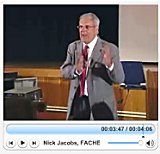Imagine if you lived in a country where your personal beliefs could get you into serious trouble. Not just some side-eye from your neighbor, but real, legal trouble. Where one religion calls all the shots and questioning that authority doesn’t make you brave, it gets you arrested. Sounds extreme? Unfortunately, that’s the day-to-day reality in places like Iran, Saudi Arabia, and Afghanistan—countries where religion and government are one. In those countries, religion doesn’t just influence law, it is the law.
With over 4,000 recognized religions in the world, belief systems are often geographically oriented. Where you happened to be born or how active the missionaries were in that region usually has some major impact on your belief system. Our country is about 63 percent Christian, 6 percent Jewish, Muslim, Buddhist, Hindu, Shinto, and others, and 30 percent unaffiliated.
These religions produce different customs, beliefs, and ideas about what the universe is, what happens when you die, and if you can eat certain foods. So, when a government picks just one of those belief systems to control everyone’s life? That’s not unity. That’s control—with a theological dress code.
The Founding Fathers of the United States saw this coming. They were not exactly fortune tellers, but they had seen what happened when governments became too connected to one specific religion in Europe and in colonial America.
Jefferson, Madison, Monroe, and Adams observed places like colonial Virginia where people were fined and jailed for not following the Church of England’s rules. That’s “freedom to do exactly what we tell you, or else.” Jefferson called it a “tyranny over the mind of man,” which is 18th-century for “this is really messed up.” Madison believed that even a little government involvement in religion was dangerous—like playing with fire next to a Zambelli fireworks display.
So, they built in major protections, like the First Amendment, which clearly says the government cannot establish a single religion or stop people from practicing theirs. It was much more than a bold move. In fact, it was a radical move for that time. They declared that people could worship—or not worship—without being punished, shunned, or jailed. What a concept.
Now here’s the reality check.
Yes, the U.S. is still by law a secular nation. But lately? Some things are starting to look a little too much like a theocracy. Some religious-based schools are promoting a very narrow worldview where “different” is “not welcome.” Certain states have started passing laws not based on science or personal rights, but on their specific moral codes rooted in one religion’s beliefs.
Meanwhile, hate crimes like the Tree of Life assault against religious minorities are rising. Some lawmakers are banning discussions about race, gender, or religion in schools, because, heaven forbid, a student learn other deep truths about history
These kinds of shifts are textbook red flags. The Founders would surely be concerned about these current decisions in Congress, the States, and Courts across the United States. And let’s be perfectly clear, the Founders were not anti-religion. Many were deeply religious. But they also had this idea that religion works best when it is a choice, not a government mandate.
They believed faith is meaningful because it’s freely chosen, not because it’s legally required. Their message was simple: When religion and government come together too tightly, personal liberty goes away.
Here’s the thing about freedom—it doesn’t disappear overnight. It erodes. Slowly. Quietly. A law here, a policy there, a gentle “Maybe don’t say that in class.” And one day, we wake up in a country where individual rights are politely (or not-so-politely) overruled by one group’s belief system.
If we want to protect freedom, we need to remember what the Founders knew: that real faith, like real democracy, thrives only in a society where people are free to choose for themselves.




